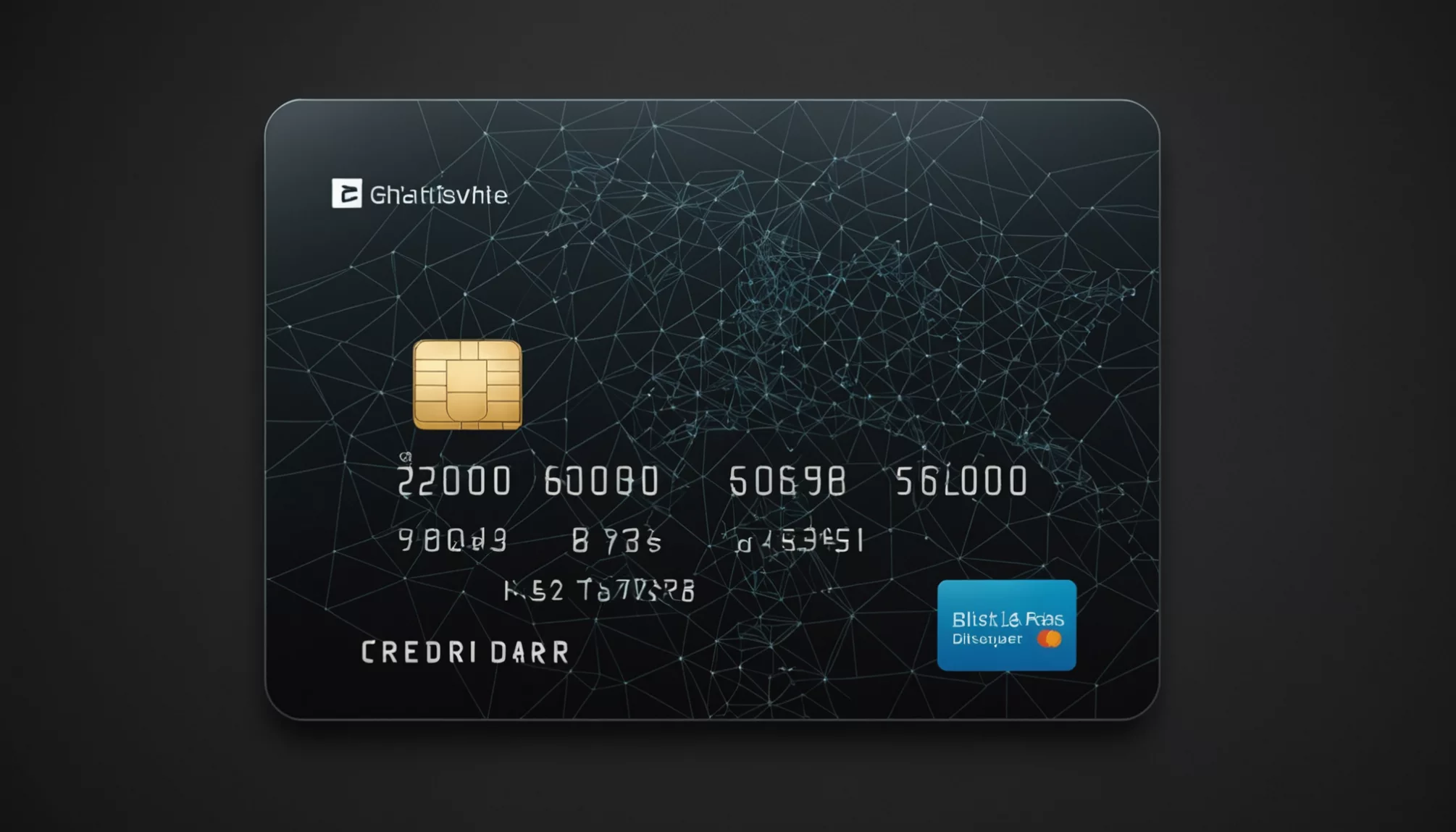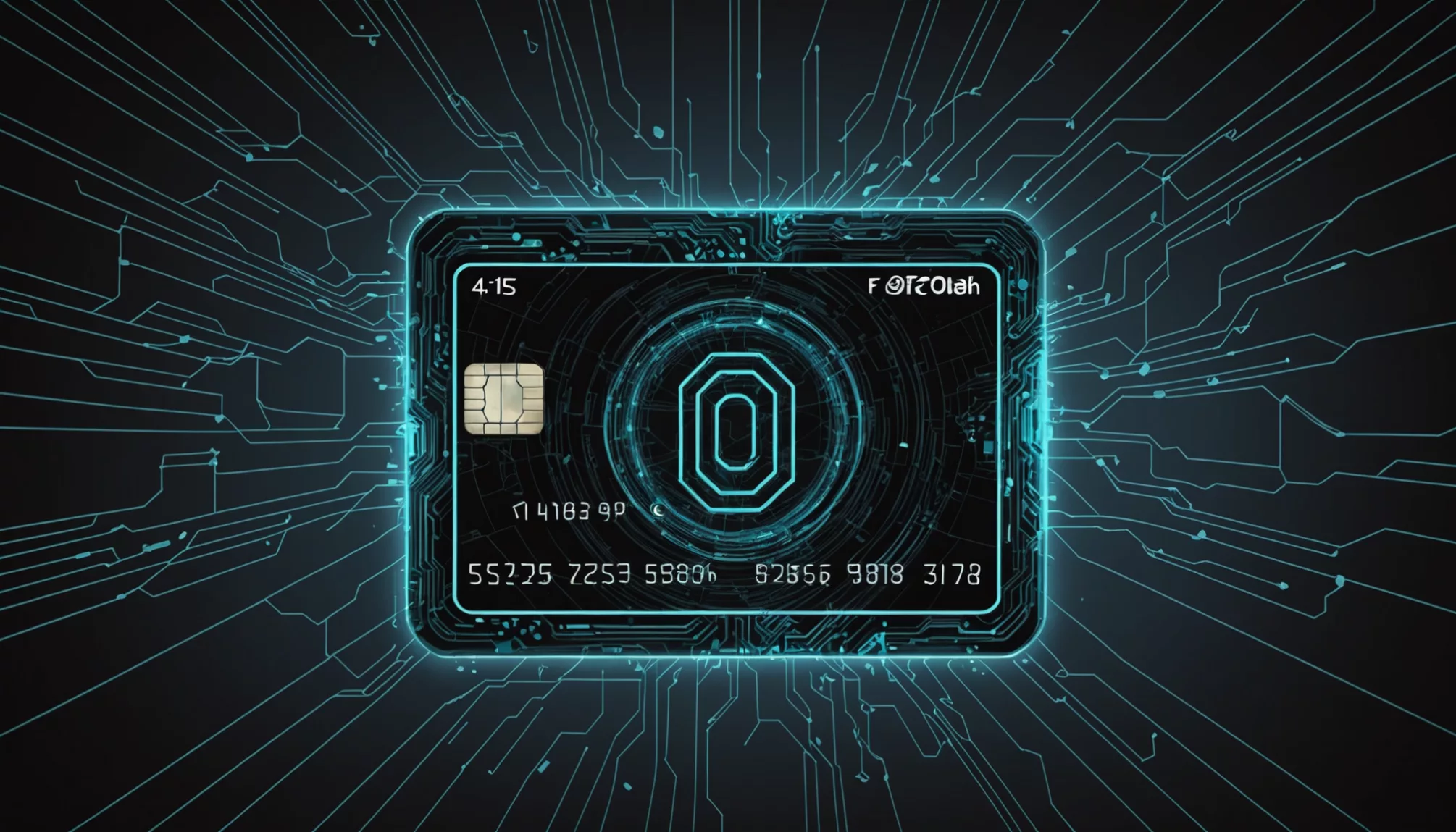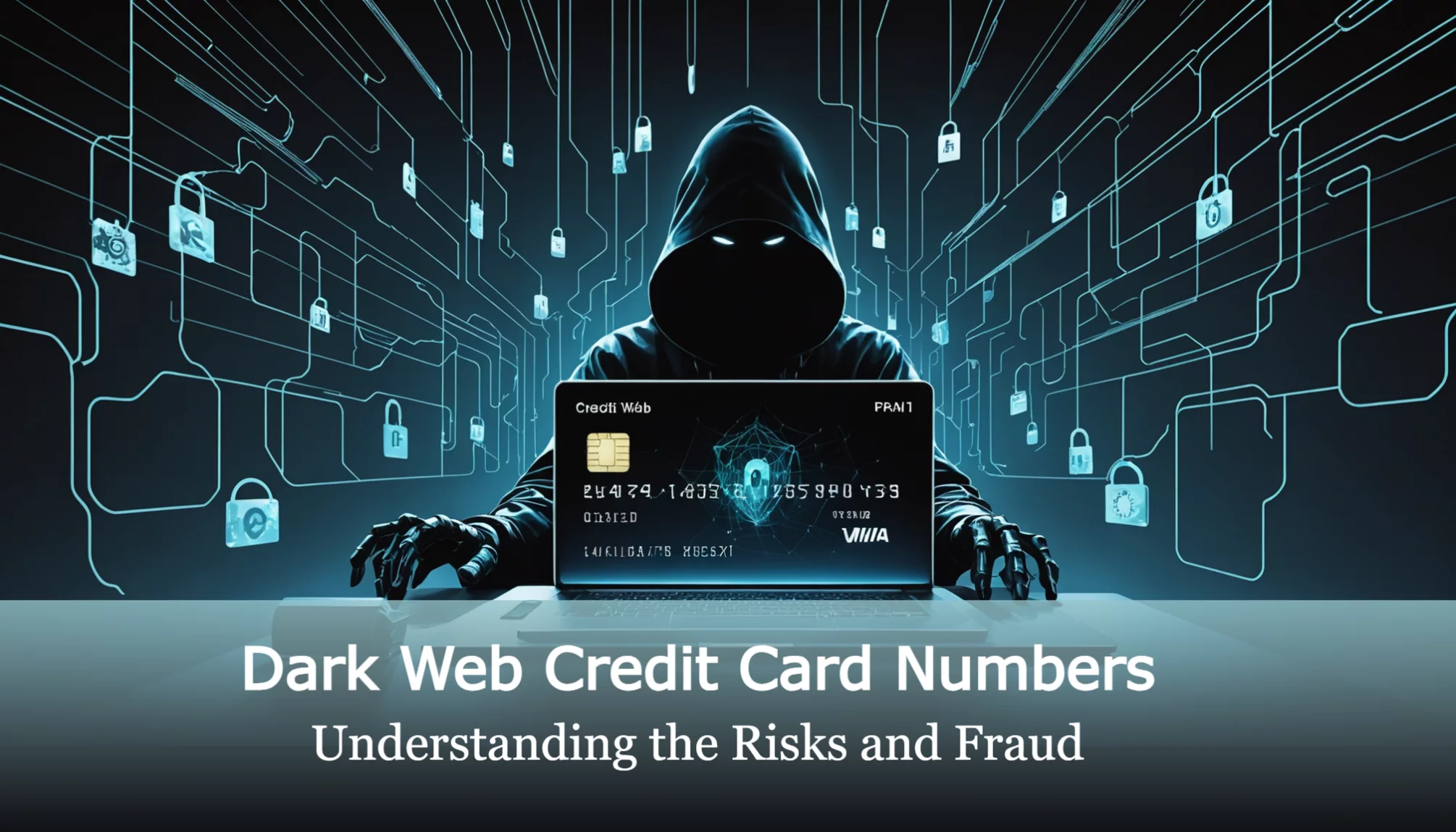Dark web credit card numbers pose a major threat. Hackers steal and sell card data online, putting users at risk. The average cost of a hacked card is just $10. 1 This low price makes stolen cards easy for criminals to buy.
Alex Herrick knows the dangers of online fraud. As a web security expert, he’s seen how thieves get card info. They use data breaches, phishing, and skimmers. 3 Hackers then sell the stolen numbers on hidden sites. 2 Learn how to protect your cards from dark web crooks.
Key Takeaways
- Dark web credit card fraud is a big problem. Over 1.5 million US card details were sold online in 2022.
- Stolen cards sell for $10 to $120 each on hidden sites. Prices depend on the card type and limit.
- Hackers get card info through data breaches, phishing, and skimming devices at stores or ATMs.
- To stay safe, use strong passwords, set up alerts, and check your accounts often for odd charges.
- New tech like AI and encryption help fight fraud, but online shopping risks are growing too.
What Are Dark Web Credit Card Numbers?

Dark web credit card numbers are stolen card details sold on hidden online markets. These illegal markets let criminals buy and sell card info for fraud.
Understanding Credit Card Fraud on the Dark Web
Credit card fraud on the dark web is a growing threat. Criminals steal card details and sell them online. In 2022, over 1.5 million US card details were found for sale. 1 This shows how big the problem is.
Hackers get card info through data breaches, phishing, and skimming devices at stores or ATMs.
The dark web makes it easy to buy and sell stolen cards anonymously. Prices vary based on the card type and account balance. Some sites even offer “guarantees” on their stolen data.
This illegal market costs banks and cardholders millions each year. Türkiye faces high risks due to non-refundable cards. 2 Next, we’ll look at how credit card info ends up on the dark web.
How Stolen Credit Card Information Is Sold
Stolen credit card info sells fast on dark web markets. Crooks grab card numbers, names, and security codes. They package this data into “dumps” for sale. Buyers pay $10 to $120 per card, based on the card’s limit and type. American Express cards fetch higher prices due to their spending power. 3
Dark web shops operate like illegal Amazon stores. Sellers list card details with prices and ratings. Buyers can search by bank, country, or card type. Some shops offer “guarantees” on their stolen data.
They promise refunds if cards don’t work. This black market thrives on anonymity and cryptocurrency payments. 1
The dark web is a digital black market where stolen financial data provides immediate cash-out opportunities for fraudsters, says cybersecurity expert Alex Herrick.
Facts About Dark Web Credit Card Fraud
Dark web credit card fraud poses serious risks to consumers and businesses alike. Let’s explore some key facts about this illicit activity.
| Facts About Dark Web Credit Card Fraud |
|---|
• 4.5 million credit card numbers were sold on the dark web in early 2022 • Nearly 50% of these numbers came from U.S.-issued cards • Stolen card data prices ranged from $17 to $120 in 2022 • The U.S. has the highest volume of available card details • 65% of merchants saw more chargeback fraud • Fraudsters often use stolen data to create fake cards for gift cards and travel tickets |
These stats highlight the scale of credit card fraud on dark web markets. 1 Next, we’ll look at how this sensitive data ends up for sale online.
How Does Credit Card Fraud End Up on the Dark Web?

Credit card fraud often starts with data breaches or hacking. Criminals steal card info and sell it on hidden websites. These sites are hard to find and use special software to stay secret.
Common Methods Used by Scammers to Steal Credit Card Data
Scammers use clever tricks to steal credit card data. Here are some common methods they employ:
- Data breaches: Hackers break into company databases to access stored card details. In 2022, over 4 million card records were exposed this way. 1
- Phishing attacks: Fake emails or websites trick people into sharing their card info. These often look like real banks or shops.
- Skimming devices: Hidden readers on ATMs or gas pumps copy card data. They can grab info from magnetic strips in seconds. 4
- Malware: Viruses on phones or computers can steal saved card details. This targets online shoppers who save their info.
- Social engineering: Scammers pose as bank staff to get card info by phone. They may claim there’s a problem with your account.
- Dumpster diving: Thieves search trash for old bills or statements. Shredding papers helps stop this.
- Shoulder surfing: Watching people enter PINs at stores or ATMs. Using your hand as a shield can help.
- Card cloning: Copies are made of physical cards. This often happens at shops or restaurants.
The Role of Transactions in Fund Transfers
Dark web transactions play a key role in fund transfers for credit card fraud. Cybercriminals use cryptocurrency to buy and sell stolen card data anonymously. This lets them quickly cash out funds from compromised accounts.
Marketplaces on the dark web work like regular online stores. Users can browse listings, chat with sellers, and make purchases using untraceable digital coins. 5
These illegal transactions pose big risks. They lead to financial losses for both people and businesses. Merchants face more chargebacks from fraudulent charges. In fact, 65% of merchants saw a rise in chargeback fraud recently.
Stolen financial info sold online gives scammers instant access to victims’ money. This makes it crucial to monitor accounts closely and use strong security measures.
Detecting Fraudulent Activity on Your Accounts
Spotting fraud on your accounts is key. Check bank statements often for odd charges. Set up alerts to catch weird stuff fast. Email, text, or app notices work great. These tools flag sketchy buys right away. 6
Flare and other smart tech can track stolen info. They scan the web for your data. This helps stop bad guys before they strike. AVS systems also catch fake online buys. They match billing and shipping addresses to spot fakes. 1
Protecting Yourself from Dark Web Credit Card Fraud

Protect your credit card info from dark web fraud. Use strong passwords, monitor accounts, and set up alerts. Learn more tips to stay safe online.
Best Practices to Monitor Your Credit Card Information
Credit card safety requires active steps. Here are key practices to monitor your credit card info:
- Set up alerts. Enable text or email notifications for all transactions on your card.
- Check statements often. Review your credit card activity weekly, not just monthly.
- Use strong passwords. Create unique, complex passwords for all online accounts.
- Enable two-factor authentication. Add an extra layer of security to your accounts. 1
- Monitor your credit report. Get free annual reports from major credit bureaus.
- Use secure networks. Avoid public Wi-Fi for online shopping or banking.
- Keep personal info private. Never share card details over unsecured channels.
- Update contact info. Ensure your card issuer can reach you about suspicious activity.
- Use virtual card numbers. Generate one-time use numbers for online purchases.
- Install security software. Use up-to-date antivirus and anti-malware programs.
Using Alerts for Unknown Tracker Alerts
Alerts for unknown trackers help protect your credit card info. These alerts can spot fraud fast and keep your money safe.
- Set up email alerts from your bank
- Turn on push notifications for your credit card app
- Enable text message alerts for suspicious activity
- Use dark web monitoring services to check for leaked data
- Install a credit monitoring app on your phone
- Sign up for identity theft protection with real-time alerts
- Create Google Alerts for your name and credit card numbers
- Use a password manager with breach monitoring features
- Set up 2-factor authentication on financial accounts
- Monitor your credit report regularly for unusual changes
How to Use Tools to Detect and Flare Up Potential Fraud
Tools play a key role in spotting credit card fraud. Here are some ways to use these tools:
- Use dark web monitoring: Flare’s platform tracks .onion sites and Telegram channels for stolen card data. 8
- Set up bank alerts: Get texts or emails about strange charges right away.
- Install tracker apps: These apps watch your card use and flag odd buys.
- Check your credit report: Look for new accounts you didn’t open.
- Use two-factor auth: Add an extra step to log in to your bank account.
- Try virtual card numbers: Use one-time numbers for online shopping.
- Sign up for ID theft protection: These services watch for your info on the dark web.
- Use strong, unique passwords: Don’t reuse passwords across accounts. 9
Detecting Credit Card Fraud: What To Look For

Spotting credit card fraud takes sharp eyes. Watch for odd charges and use apps to track your spending.
Signs of Suspicious Activity: Be Alert
Staying alert to suspicious activity can protect your finances. Here are key signs to watch for:
- Unfamiliar charges: Check your statements for any purchases you don’t recognize, even small ones.
- Missing statements: If your bill doesn’t arrive on time, someone may have changed your address.
- Declined cards: An unexpectedly declined card could mean a thief maxed it out.
- Strange ATM behavior: Machines that seem off or have odd attachments may be compromised.
- Unexpected credit alerts: New accounts or inquiries you didn’t authorize are red flags.
- Merchant verification calls: Your bank may contact you about unusual purchases.
- Gift card purchases: Thieves often buy gift cards with stolen credit info. 1
- Online account changes: Check for updates to your info you didn’t make.
- Multiple failed login attempts: This could mean someone’s trying to guess your password.
- Sudden drop in credit score: Unexplained score changes may signal identity theft.
Using Tracker Apps to Monitor Your Card Data
Tracker apps offer a powerful way to keep tabs on credit card activity. These tools scan transactions in real-time, flagging any suspicious charges instantly. Users get alerts right on their phones if something looks off. 1 This quick notice helps spot fraud fast, before major damage occurs.
Many tracker apps link directly to bank accounts for up-to-the-minute info. They show recent purchases, account balances, and spending trends all in one place. Some even check if card data pops up on the dark web.
This extra layer of security gives peace of mind in today’s digital world. With just a few taps, people can see exactly where their money goes and catch problems early.
Strategies for Detecting Unwanted Transactions
Detecting unwanted transactions is key to protecting your finances. Here are smart ways to spot and stop fraud:
- Set up alerts: Get texts or emails for any card use. This helps catch odd charges fast. 10
- Check statements often: Look at your accounts weekly. Spot weird charges right away.
- Use bank apps: Many apps show charges in real-time. Check daily for strange activity.
- Know your spending: Track what you buy. Odd charges will stand out more.
- Watch for small test charges: Thieves often test cards with tiny purchases first.
- Look for charges from weird places: Be wary of buys from spots you don’t go to.
- Check for duplicate charges: Make sure stores don’t charge you twice by mistake.
- Keep receipts: Match paper trails to online records for accuracy.
- Use virtual card numbers: Some banks offer this for safer online shopping.
- Monitor your credit report: Get free reports yearly to spot new accounts. 8
These steps help catch fraud early. Next, we’ll look at how tech fights dark web card fraud.
The Future of Dark Web Credit Card Fraud: Current Trends

Dark web credit card fraud keeps changing. New tech tools fight back, but risks in online shopping grow too.
How Technology Is Evolving to Counter Card Fraud on the Dark Web
Tech firms are stepping up the fight against dark web credit card fraud. New AI tools scan the web for stolen card data. These systems flag suspicious activity fast. They alert banks and users right away. This helps stop fraud before it starts. 1
Encryption keeps card info safer online. Multi-factor login adds extra security. Dark web monitoring tracks mentions of stolen cards. Digital banking apps now have built-in fraud alerts.
Users get notified of odd charges instantly. These advances make it harder for criminals to use stolen cards.
Potential Risks Associated with E-commerce Transactions
E-commerce transactions carry serious risks. Fraud losses hit $41 million globally in 2022. Experts predict this will jump to $48 billion by 2023. 11 North America faces the biggest threat, with 42% of global e-commerce fraud value.
Criminals use stolen credit card data to make fake purchases. They also abuse promos, costing U.S. retailers $89 billion in 2021.
Shoppers must stay alert. Fraudsters use card skimmers at gas stations to steal info. They sell these details on dark web marketplaces. Buyers should watch for signs of identity theft.
Using multi-factor authentication helps protect accounts. Checking monthly statements can catch unauthorized charges fast. Strong passwords and security tools add extra layers of defense against cyber threats.
Conclusion
Dark web credit card fraud poses real dangers. Users must stay alert and take action. Regular account checks and strong passwords help. Using two-factor authentication adds extra safety.
Cybersecurity tools can spot threats early. Knowledge and vigilance are key defenses against this growing problem.
FAQs
1. What are dark web credit card numbers?
Dark web credit card numbers are stolen card details sold on hidden websites. Bad guys use these to make fake purchases. They get the info from hacked accounts or card skimmers.
2. How much do stolen cards cost on the dark web?
Prices vary. Some go for cents per dollar of credit limit. Others, like American cards, cost more. The average account balance affects price too. Crooks look for the best deal.
3. What risks come with dark web credit card fraud?
Big risks! Victims face money loss and credit damage. It’s hard to spot at first. Fraudsters can make many purchases before you know. Your bank may help with some costs.
4. How can I protect my credit card info?
Use strong passwords and two-step checks. Watch your statements for odd charges. Don’t click weird links. Keep your social security number safe. Some folks use ID theft services too.
5. What should I do if my card is stolen?
Call your bank right away. They’ll stop the card and send a new one. Check your credit report for strange stuff. You might need to file a police report for big losses.
6. Are some cards safer than others?
Yes! Cards with chips are harder to copy. Some banks use AI to spot weird buys. Virtual cards for online shopping help too. But no card is 100% safe. Always be careful.
References
- ^ https://flare.io/learn/resources/blog/dark-web-credit-cards/ (2023-05-15)
- ^ https://www.aura.com/learn/dark-web?srsltid=AfmBOorT6Ze1ARiaX9dfqoaeMDmZiWJ7FL1rwcJ8pJXKaxmvHh1bHDdJ
- ^ https://www.aura.com/learn/how-do-people-steal-credit-card-numbers?srsltid=AfmBOoqSTe7PqSf1BLU77DiOy04B-08bw56xGamz2H9DVgX6nR3y-u82
- ^ https://www.aura.com/learn/how-do-people-steal-credit-card-numbers?srsltid=AfmBOopO8i8D9-PDrwKHe0fSbgObvmKW2GnMZSN4Tea7nne4OPr0_wUq
- ^ https://www.fraud-magazine.com/cover-article.aspx?id=4295009061
- ^ https://www.fraud.com/post/credit-card-fraud
- ^
https://www.chase.com/personal/credit-cards/education/basics/protecting-yourself-from-the-dark-web - ^ https://www.identityguard.com/news/credit-card-fraud-detection
- ^ https://www.cybersource.com/en-us/blog/2021/what-you-need-to-know-about-card-testing-fraud.html (2021-11-17)
- ^ https://www.cnbc.com/select/credit-card-fraud/
- ^ https://b2b.mastercard.com/news-and-insights/blog/ecommerce-fraud-trends-and-statistics-merchants-need-to-know-in-2024/

